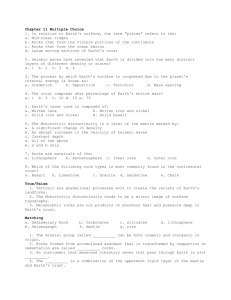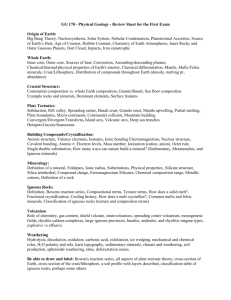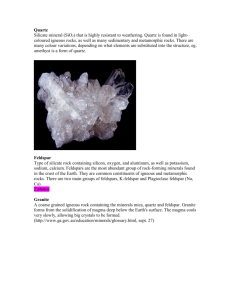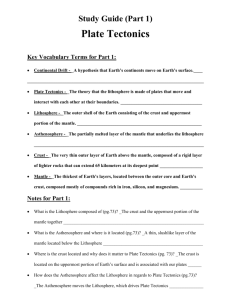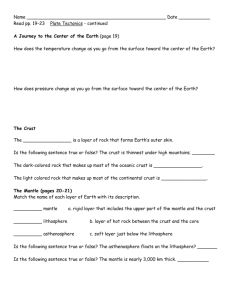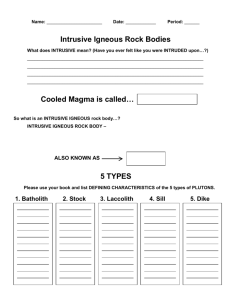Geology Unit Review - Bennatti
advertisement
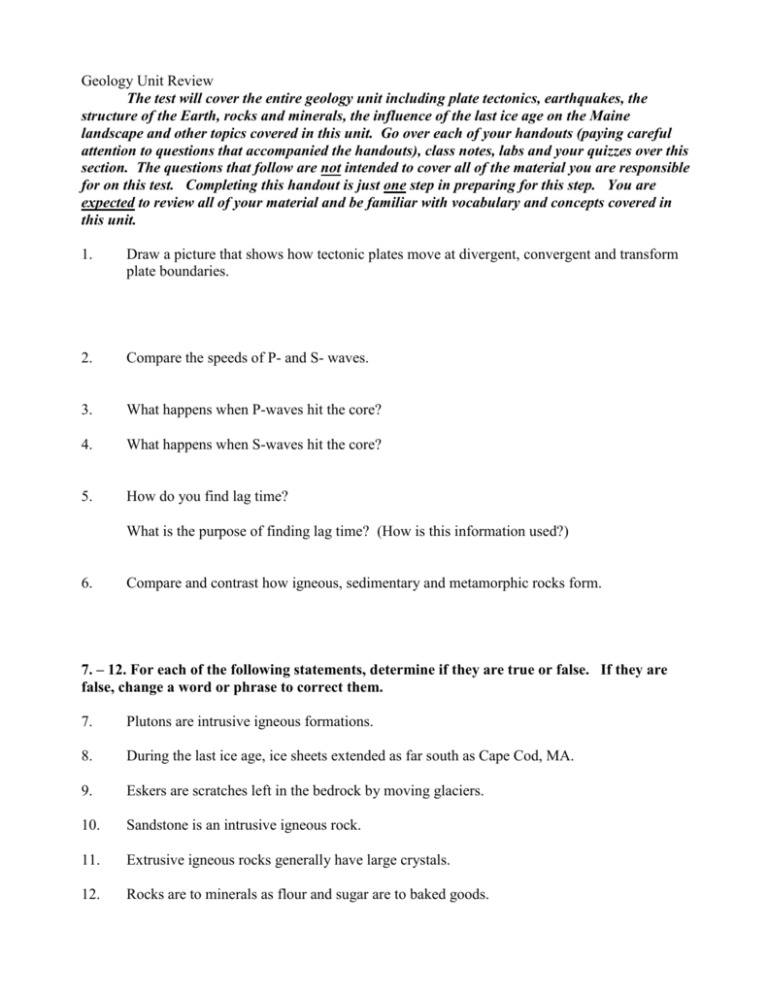
Geology Unit Review The test will cover the entire geology unit including plate tectonics, earthquakes, the structure of the Earth, rocks and minerals, the influence of the last ice age on the Maine landscape and other topics covered in this unit. Go over each of your handouts (paying careful attention to questions that accompanied the handouts), class notes, labs and your quizzes over this section. The questions that follow are not intended to cover all of the material you are responsible for on this test. Completing this handout is just one step in preparing for this step. You are expected to review all of your material and be familiar with vocabulary and concepts covered in this unit. 1. Draw a picture that shows how tectonic plates move at divergent, convergent and transform plate boundaries. 2. Compare the speeds of P- and S- waves. 3. What happens when P-waves hit the core? 4. What happens when S-waves hit the core? 5. How do you find lag time? What is the purpose of finding lag time? (How is this information used?) 6. Compare and contrast how igneous, sedimentary and metamorphic rocks form. 7. – 12. For each of the following statements, determine if they are true or false. If they are false, change a word or phrase to correct them. 7. Plutons are intrusive igneous formations. 8. During the last ice age, ice sheets extended as far south as Cape Cod, MA. 9. Eskers are scratches left in the bedrock by moving glaciers. 10. Sandstone is an intrusive igneous rock. 11. Extrusive igneous rocks generally have large crystals. 12. Rocks are to minerals as flour and sugar are to baked goods. 13 Subduction zones occur along _____________plate boundaries. 14. ________________ are intrusive igneous formations that cut horizontally across the country rock. 15. Glacial till was deposited by: a. wind; b. glacial meltwater; c. glacial ice 16. Which of the following areas are particularly vulnerable to earthquakes. a. sills; b. eskers; c. plate boundaries; d. mantle; e. none of the above 17. Draw a diagram of the Earth and label the following. Inner core, mantle, lithosphere, outer core, crust, lithosphere 18. Which layer is the thinnest? a.. Inner core; b. mantle; c. lithosphere; d. outer core; d. crust; e. lithosphere 19. Name three features of the landscape that are left behind by glaciers. 20. Describe how Blue Hill Mountain formed. Your answer should include a discussion of depth, plutons, country rock, weathering and erosion and these terms should be defined as part of your answer. 21. Describe two differences between continental crust and oceanic crust.



